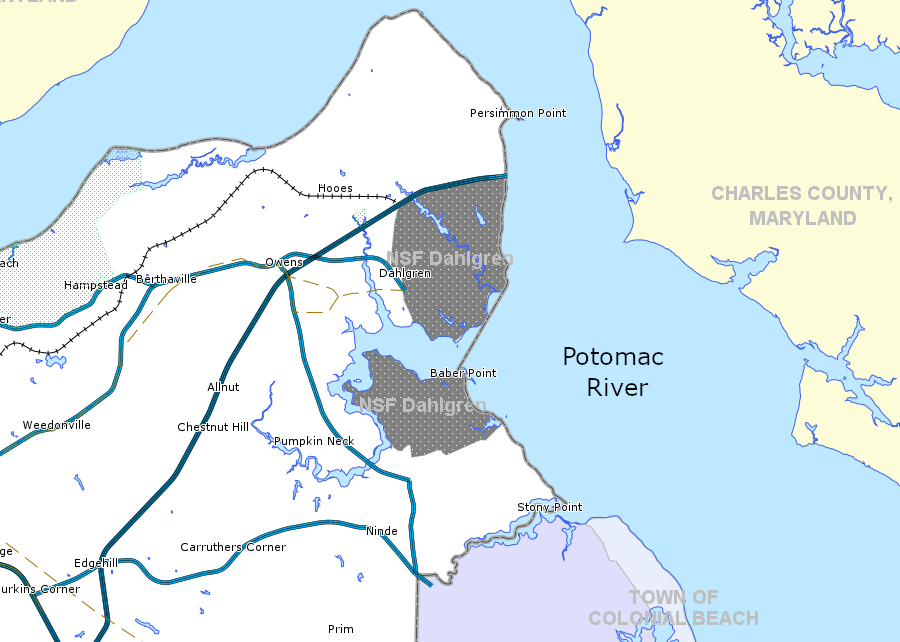
Naval Support Facility Dahlgren is located in King George County, on both sides of Machodoc Creek
Source: King George County

Naval Support Facility Dahlgren is located in King George County, on both sides of Machodoc Creek
Source: King George County
What is now the Naval Support Facility Dahlgren, part of Naval Surface Warfare Center (NSWC), started in 1918 as the Naval Proving Ground for testing high-powered guns to be placed on US Navy ships. The facility's name honors Rear Admiral John Adolphus Dahlgren, "The Father of Naval Ordnance." He developed a smooth-bore, muzzle-loading gun with enough extra metal at the breech to make it look like the soda-water bottles of his time.
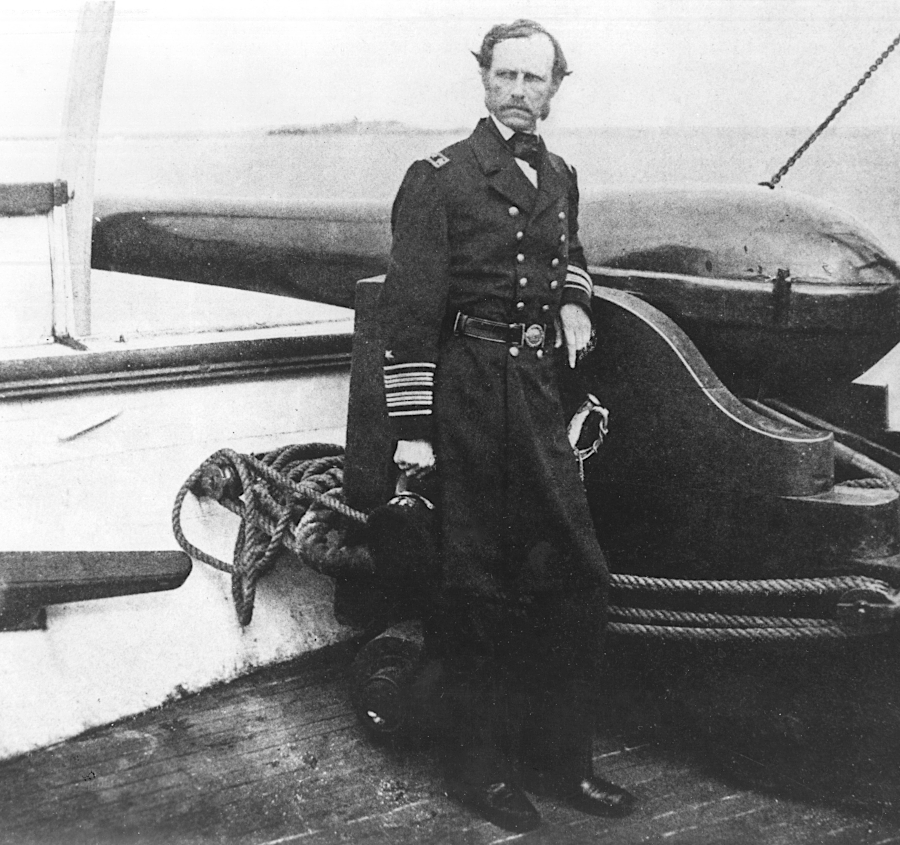
John Dahlgren, next to a Dahlgren Gun
Source: US Naval Institute, Naval History Blog, The Soda-Bottle Shaped Shell Guns
The shape and reinforcing metal reduced the risk of the weapon bursting and killing the sailors firing it, a danger which Dahlgren had experienced personally. In 1844, the "Peacemaker" gun had exploded during a demonstration of its power on the USS Princeton while cruising on the Potomac River. Among others, the Secretary of State and the Secretary of the Navy were killed. President John Tyler had chosen to stay below decks; otherwise, he too might have been killed.1
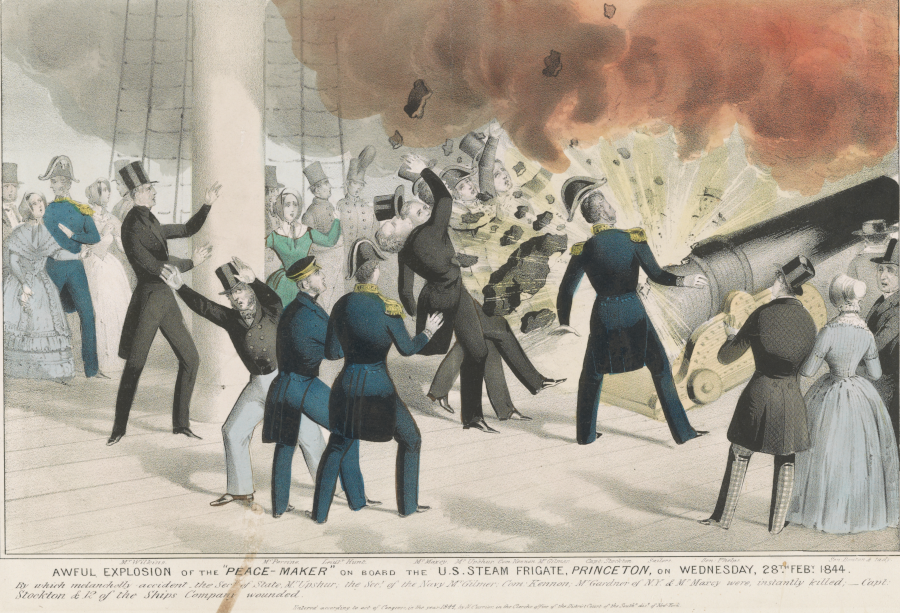
before John Dahlgren, large guns on naval ships were prone to exploding
Source: Library of Congress, Awful explosion of the "peace-maker" on board the U.S. Steam Frigate, Princeton, on Wednesday, 28th Feby. 1844
While at the Washington Navy Yard prior to the Civil War, John Dahlgren test-fired weapons down the Anacostia River. The US Navy moved its testing range to Annapolis in 1872, then to Indian Head (on the Maryland shoreline of the Potomac River) in 1890. The Naval Gun Factory was operational at the Washington Navy Yard by 1892, while the US Army established its "cannon factory" at Watervliet Arsenal on the Hudson River in New York.
The Indian Head site was problematic. Each test shot required evacuating the Marine barracks that was in the line of fire, and ensuring river traffic would not be at risk. In 1913, a part of a projectile landed just 300 feet away from the Mayflower, the presidential yacht which was carrying President Woodrow Wilson at that time.
The primary driver for a better test facility was the revolution in naval strategy created by the British, who launched the HMS Dreadnought in 1906. That battleship was the first with just big, long-range guns. It could destroy enemy ships before they got close enough to use their smaller-caliber guns or launch a torpedo. Other navies responded by building new ships with long-range guns as well.
The US Navy needed a range which would allow experimental testing of its own 14" and 16" guns. Indian Head had a 6,000-yard range, but by World War I some guns could fire as far as 40,000 yards.
In 1918, after the United States entered World War I, the Federal government expanded the Naval Proving Ground at Indian Head and purchased 1,300 acres along Machodoc Creek. It offered a 90,000 yard "gun line" stretching from Machodoc Creek to the mouth of the Potomac River.
The site was first called "Lower Station." The first test firing at Dahlgren was on October 16, 1918.
Source: Dahlgren Heritage Museum, The Navy Comes To Dahlgren: King George County before and after the Navy came to Dahlgren
To distinguish the Virginia station from Indian Head in Maryland, the facility was called the U.S. Naval Proving Ground. The Bureau of Ordnance also proposed to rename the existing post office at that site in King George County. However, "Dido" was not renamed "Machodoc Creek" as planned because there was already such a post office in existence. The Navy then diverged from its standard practice of naming facilities after geographic locations, and instead decided to honor an individual. The Postal Service agreed to rename "Dido" to "Dahlgren" in 1919.
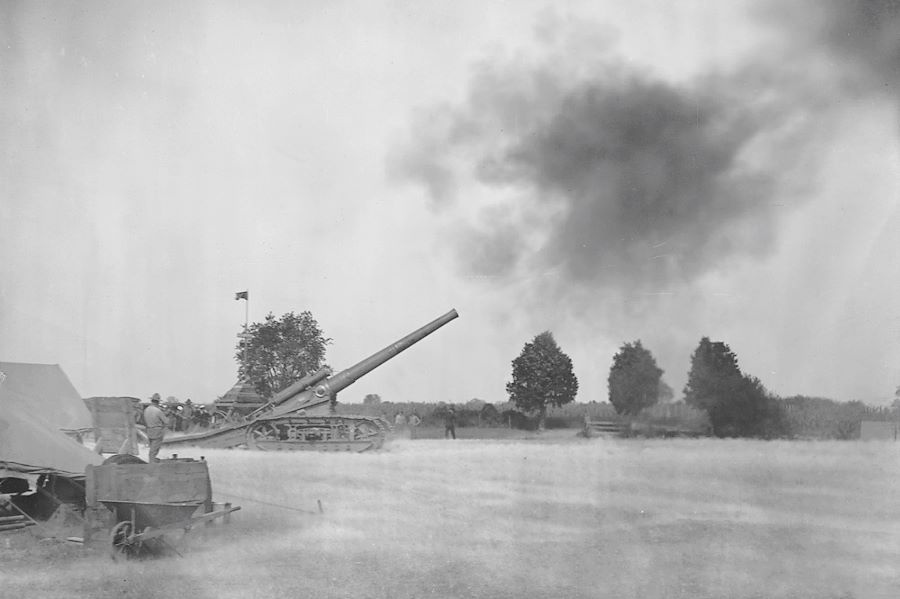
the first test at Dahlgren on October 16, 1918 involved a tractor-mounted gun
Source: Naval Sea Systems Command
Indian Head soon morphed into the Naval Powder Factory and focused on developing better propellants. It was responsible for the facility at Dahlgren until 1932. Today Naval Support Facility Indian Head is a center of excellence for multiple technologies related to missiles, energetic materials, and detonation science.
Land was acquired in King George County in 1918 for two reasons. Tt was near Indian Head, and the US Navy required a longer stretch of water than at Indian Head to test more-powerful powder charges in new gun barrels:2
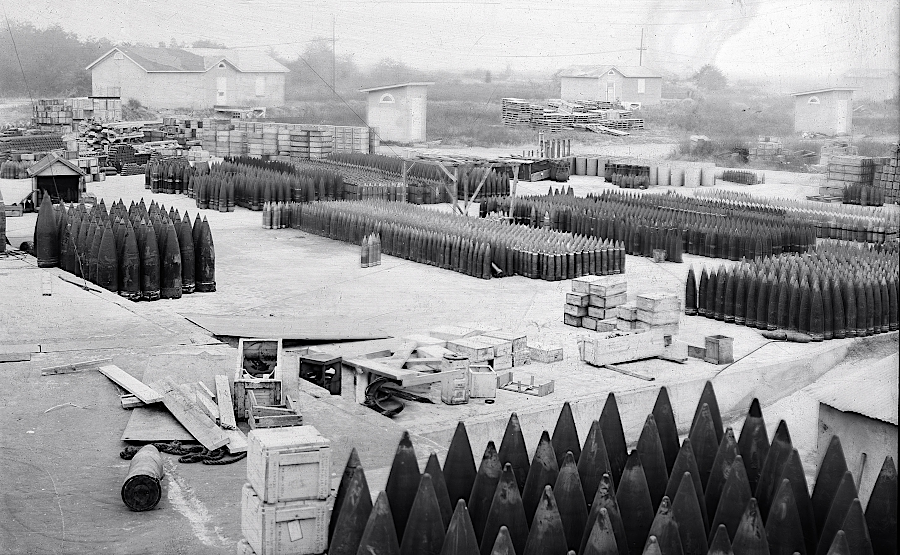
Dahlgren tested munitions, gun barrels, and mechanisms for aiming weapons
Source: Naval Sea Systems Command, Naval Surface Warfare Center Dahlgren Division, Va. - NPG BUILDING HISTORY: Shell House, General view, and concrete storage platform

test-firing the 16" guns used on battleships in World War II rattled houses along the Potomac River
Source: Naval Sea Systems Command, Touring the Base
The site was isolated, but it offered the essential requirement of an unobstructed firing range down to the mouth of the Potomac River. Even St. Clements Island was acquired and retained by the US Navy, until transfer to the State of Maryland in 1962.
The base name was changed to the Naval Proving Ground, Dahlgren in 1932, when it became the Navy's principal proving ground for every major naval gun and all ammunition supplied to the fleet. The US Navy was being expanded by 20% in the Naval Construction Program initiated by President Franklin D. Roosevelt, with passage of the Trammel-Vinson Act. Tests included the ability of armor plate on ships to withstand impacts of shells.3
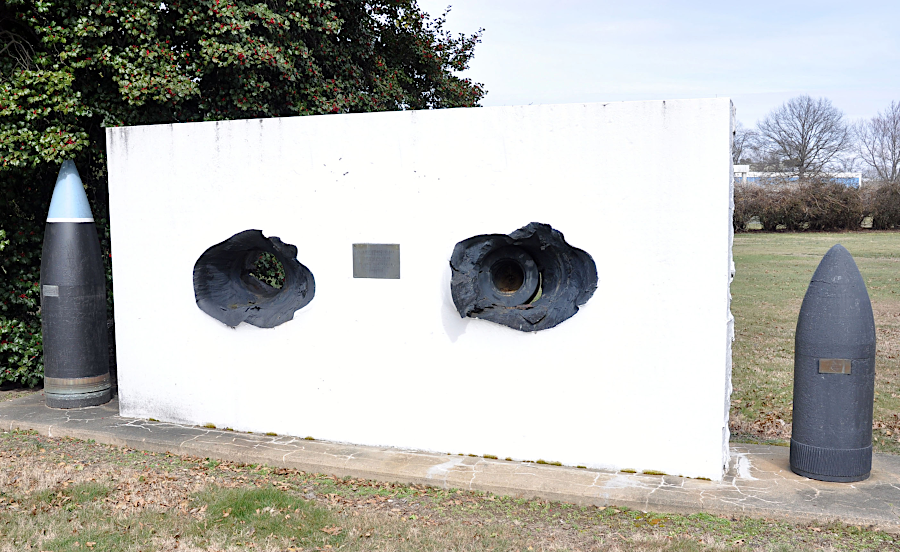
the museum at Dahlgren includes the results of a 1945 test on 19-inch thick plate, to assess its resistance to armor-piercing shells
Source: Naval Sea Systems Command, Touring the Base
The US Navy base at Dahlgren developed an early expertise in computers, since they were used for fire control of long-range guns and then missiles. The facility survived after World War II, then began to expand after the launch of Sputnik by the Soviet Union in 1958. During the Cold War, the US Navy used Dahlgren to develop the fire control and targeting software for the Fleet Ballistic Missile System.
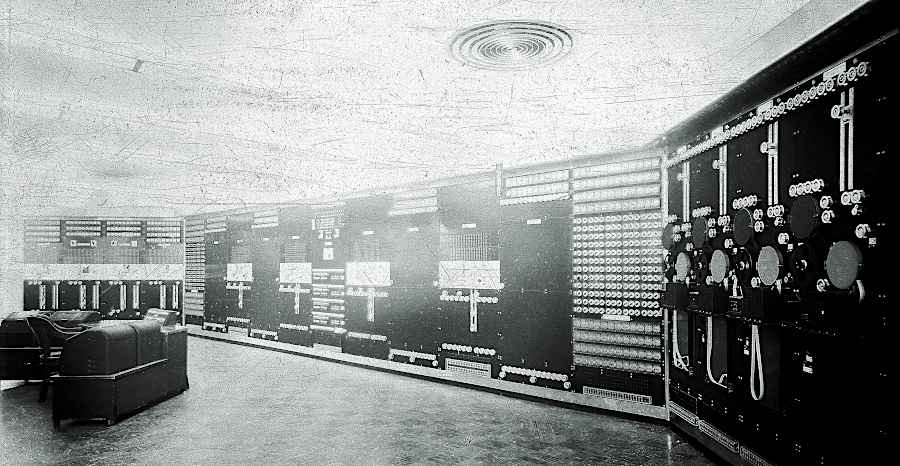
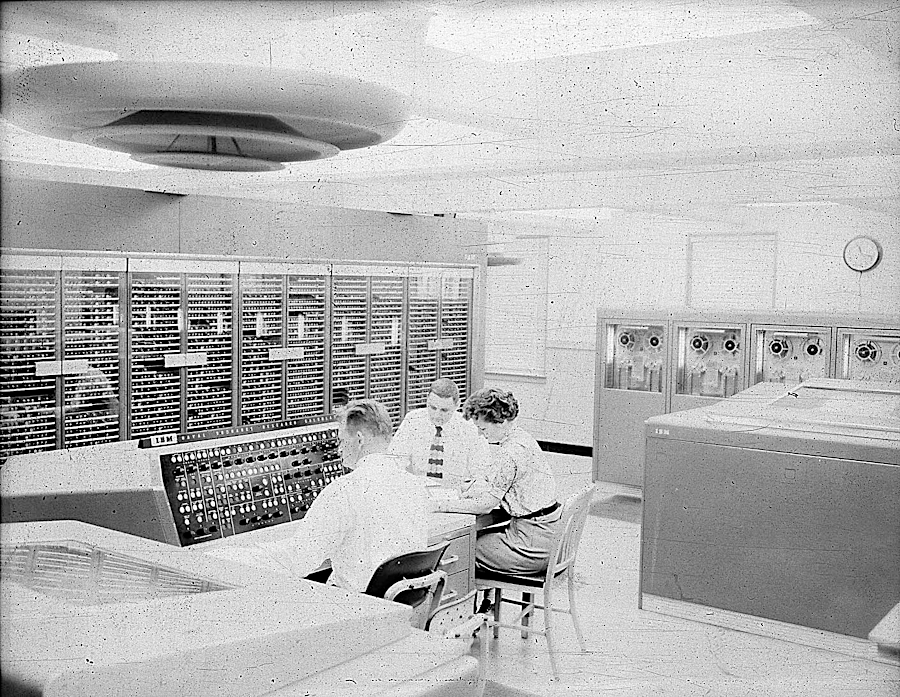
Dahlgren was a pioneer in the use of computers in the 1940's
Source: Naval Sea Systems Command, Controlled sequence calculator and operator at the NORC console
The U.S. Naval Proving Ground was renamed the Naval Weapons Laboratory in 1959. The name was changed again to the Naval Surface Weapons Center in 1974, then the Naval Surface Warfare Center in 1987, and finally the Dahlgren Division of the Naval Surface Warfare Center in 1992. In current military jargon, it is the Naval Support Facility Dahlgren.4
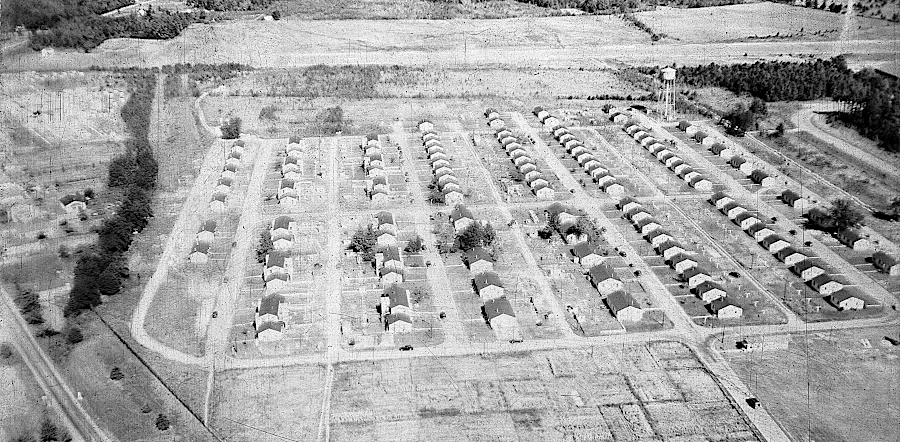
Dahlgren expanded quickly in World War II, building housing in "Boomtown" for the new workers
Source: Naval Sea Systems Command, Shoreline of Tarrytown/Boomtown and North view of Naval Proving Ground (NPG)
Explosives have been tested for decades at Pumpkin Neck. In the 1960's, a half-mile long Conical Shock Tube was constructed to simulate the effect of nuclear weapons on various materials. The project required a mass of 3,000,000 pounds of reinforced concrete to manage the recoil of a test blast.
Testing equipment includes cameras able to capture a million frames per second to document how fragments move after explosive detonations. The technicians have mastered both technology and real-world safety procedures. When in one bunker, well protected against explosions, the workers look up during tests. The bunker shakes, and at times black snakes fall down from the ceiling.
Dahlgren helped develop a case light enough for carrier aircraft to carry a nuclear bomb. To simulate an airdrop, the ELSIE test site (named for the "light case" of "LC" project) included a gun barrel to fire prototypes at 30-40' thick concrete targets. The final result was the Mark 8 nuclear weapon, one-third the weight and half the diameter of the Little Boy atomic bomb dropped on Nagasaki in 1945.
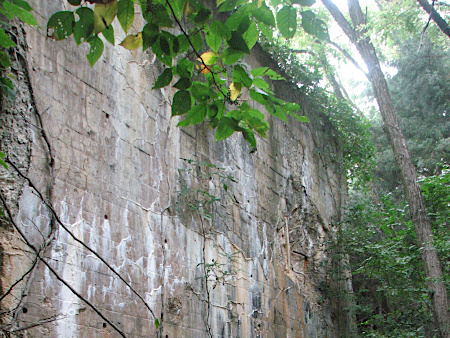
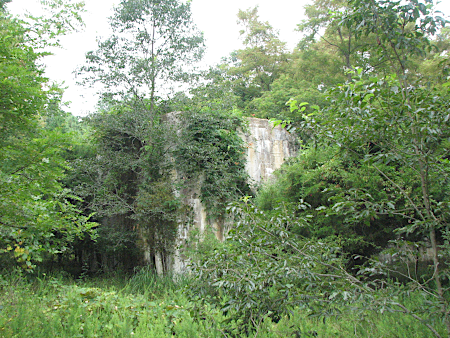
massive walls made of concrete blocks, use in development of the Mark 8 nuclear warhead, still remain on Tisdale Road
Source: Naval Sea Systems Command, Project ELSIE
U238 uranium was used in the tests as well as depleted uranium, from which the U235 had been separated. A barbette, a tube of thick steel cut from old battleships used to test how warheads would explode, became slightly radioactive from the exposure to the uranium.
Other sites that also used depleted uranium for testing of the Phalanx Gun System were cleaned up, but for years one barbette was left in an isolated location at Dahlgren. The history of its use and how it became slightly radioactive was forgotten, so the risk of moving it was unknown. A chance encounter with a former employee revealed its original use, and finally allowed for the safe disposal of the radioactive barbette.5
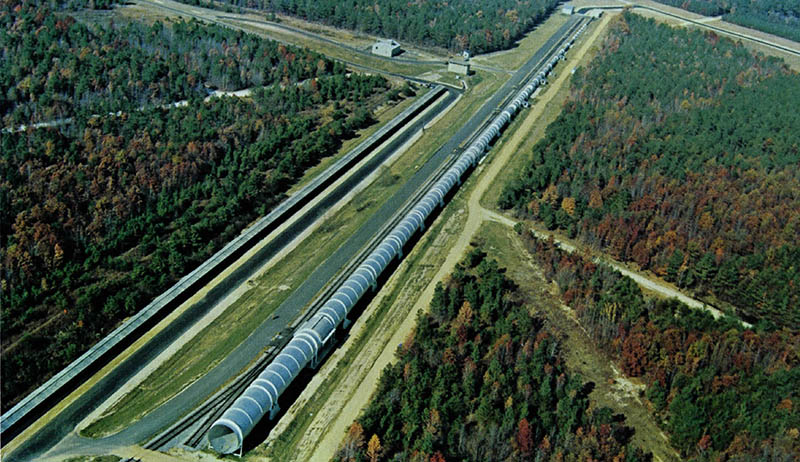
the Conical Shock Tube allowed technicians at Dahlgren to use conventional explosives to test the effects of a nuclear blast
Source: Naval Sea Systems Command, DASACON Conical Shock Tube
Today Naval Support Facility Dahlgren manages the Potomac River Test Range, "the nation's largest fully-instrumented over-the-water gun firing range," as well as land facilities on both sides of the Machodoc Creek and operations at Dam Neck in Virginia Beach.
The full length of the Potomac River Test Range extends from Dahlgren to the mouth of the Potomac River at Smith's Point. Tests are conducted typically between 8:00am-5:00pm on weekdays. For safety, range control boats flying a red flag provide on-the-water boaters a warning to stay out of the danger area.
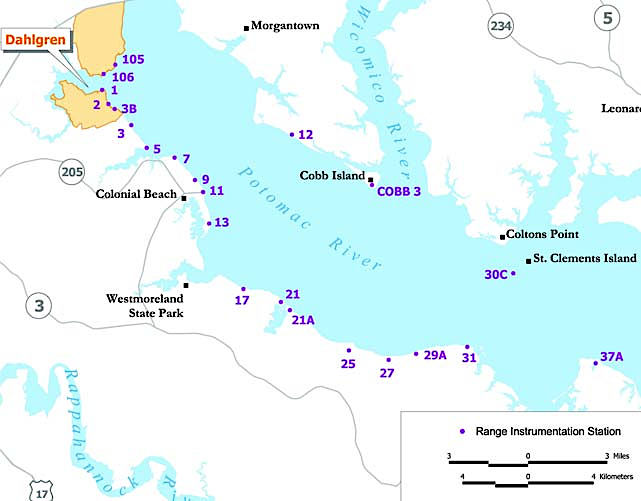
Dahlgren manages the Potomac River Test Range, with multiple instrumentation stations downstream
Source: NSWC Dahlgren Division, Dahlgren: A Unique National Asset
In 2008, Dahlgren developed the modifications needed for an Aegis Ballistic Missile Defense system on the USS Lake Erie to shoot down an American satellite. It was falling out of orbit, and there were fears that the hydrazine tank might survive re-entry and impact on land. The missile intercepted the satellite and ruptured the hydrazine tank, and all components then burned up in the atmosphere.

Dahlgren helped modify the ballistic missile launched from an Aegis cruiser that destroyed a US satellite in orbit
Source: NSWC Dahlgren Division, Dahlgren's Joint Government/National Laboratory/Industry Team Makes History in Satellite Shootdown
The facility played a key role in developing the Tomahawk Weapon System in the 1970's. It now has the leadership role for research into development of an electromagnetic railgun and other pulsed power, microwave, and laser technologies. The base in King George County also houses the US Navy's chemical, biological and radiological defense lab. A component located at Naval Air Station Oceana Dam Neck Annex in Virginia Beach develops computer programs for shipboard combat direction systems.6
Railgun technology was tested at Dahlgren, using magnetic fields instead of gunpowder to send projectiles a Mach 7 speeds as far as 100 miles. Testing revealed problems with the concept, including the lack of power on Navy ships to energize the rail guns and the ability of the barrel to withstand the forces created during a shot. The rail gun program was cancelled in 2021 and funding was redirected towards development of hypersonic missiles.7
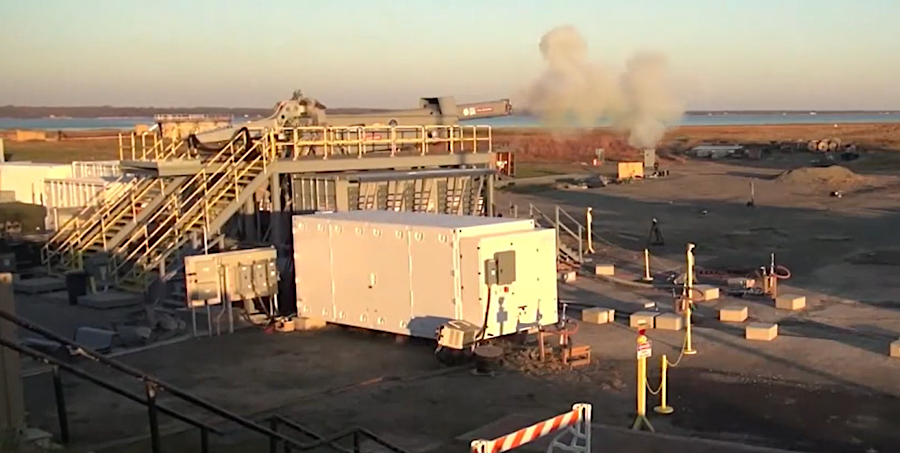
Naval Support Facility Dahlgren tests new technology which may be deployed or cancelled, such as rail guns
Source: Defense Visual Information Distribution Service, Electromagnetic Railgun Firing Test At Dahlgren Range
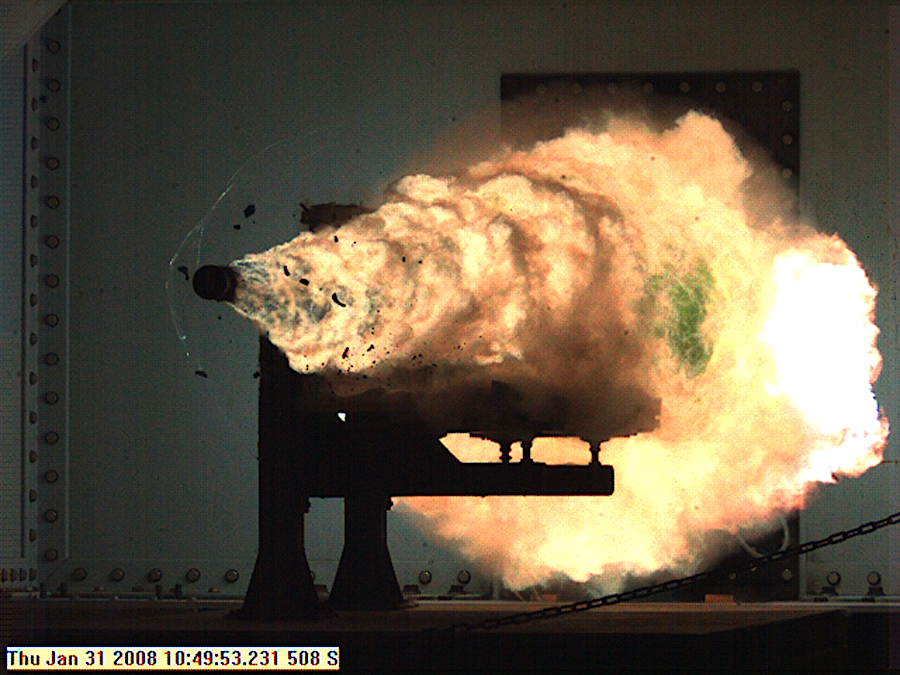
Dahlgren tested railguns that fire projectiles by electromagnetic force rather than energetic propellants
Source: Navy Live blog, ONR 32MJ electromagnetic railgun (EMRG) (August 2, 2015)
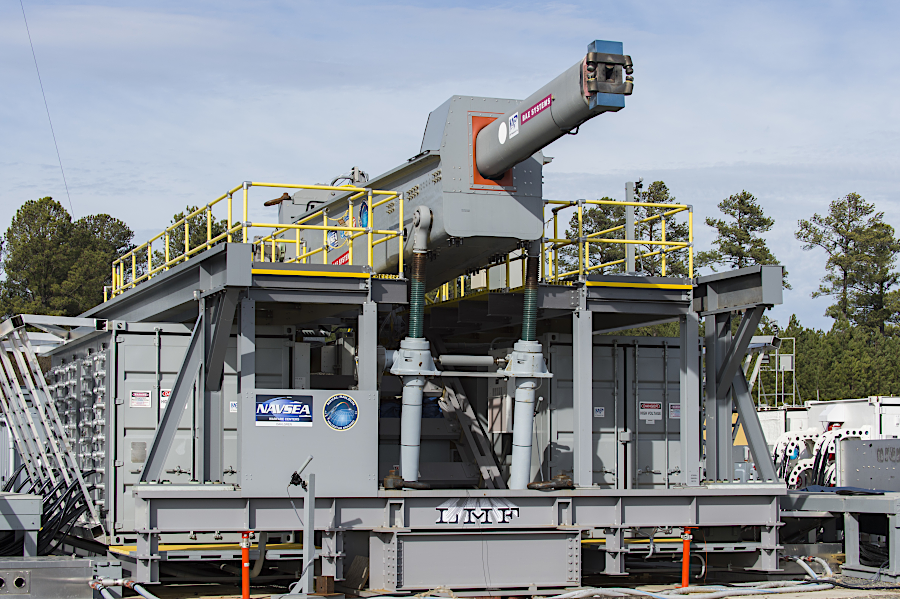
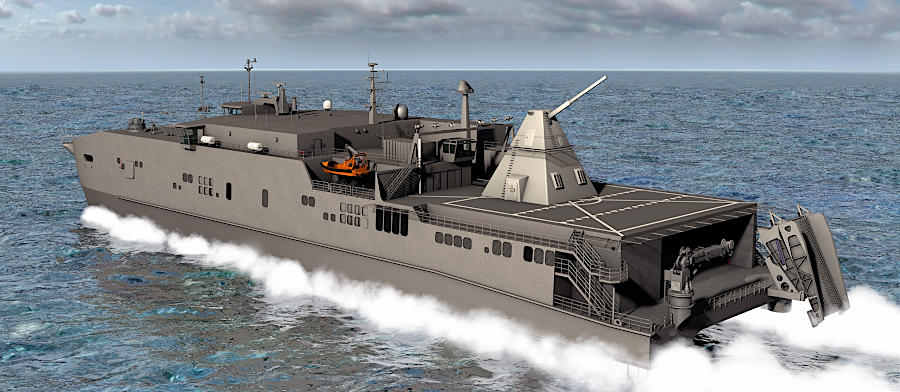
railguns tested at Dahlgren would have operated on electricity rather than chemical propellants
Source: US Navy, Image Gallery and CHIPS
Over 11,000 people were employed at Dahlgren in 2019, making it the largest employer in King George County. Roughly half were Federal civilian employees, and half were contractors. Less than 5% were uniformed members of a military service. Nearly all lived in Virginia, though the nearby Harry Nice (Route 301) bridge allows for easy crossing of the Potomac River. The US Navy originally had to construct housing on the base for workers because Dahlgren was so isolated in 1918. The rapid expansion during World War II led to construction of cheap houses lined up in rows and known as "Boomtown," but most workers are commuters to Dahlgren now.
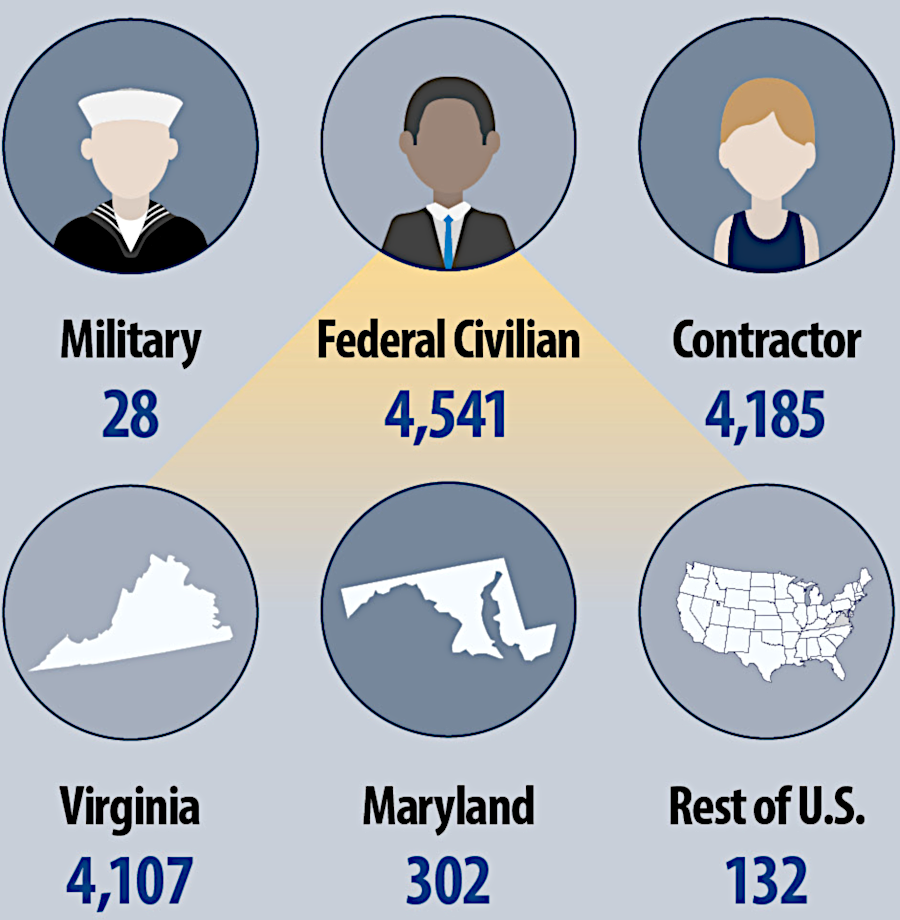
most of the employees at Dahlgren (over 11,000 now) live in Virginia
Source: NSWC Dahlgren Division, Economic Impact
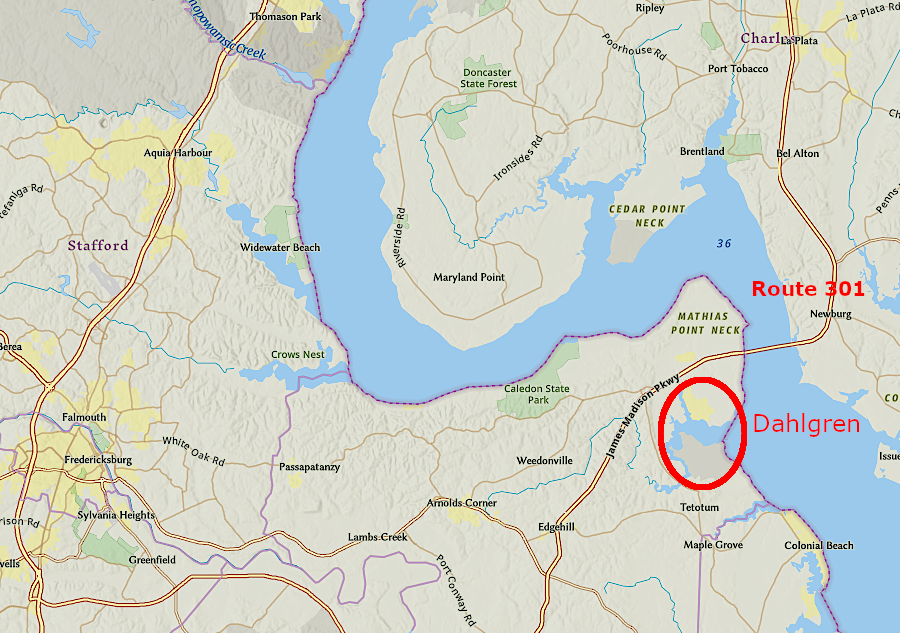
the Harry Nice (Route 301) bridge allows Maryland residents to access Dahlgren, but Fredericksburg is the nearest city
Source: ESRI, ArcGIS Online
Naval Support Facility Dahlgren is part of the Naval Sea Systems Command. It operates as a Defense Working Capital Fund facility. Instead of receiving direct appropriations in the annual budget passed by the US Congress, Dahlgren has to find customers within the Defense Department that seek the services and expertise offered at the base. The base has an annual budget of $1.5 billion, indicating its success in research and development.8
Though much of the expertise at Dahlgren involves computers, the facility still conducts weapon tests on a regular basis. Typically, inert seven-inch wide target projectiles are fired for up to 13 miles downstream, where they will impact the river and sink to the bottom. The official range today extends 25 miles downstream of the US 301 bridge connecting Virginia and Maryland. The longest test was conducted in 1928, when a 2,100 pound projectile was sent 50,000 yards (over 28 miles) downstream using 775 pounds of gunpowder.
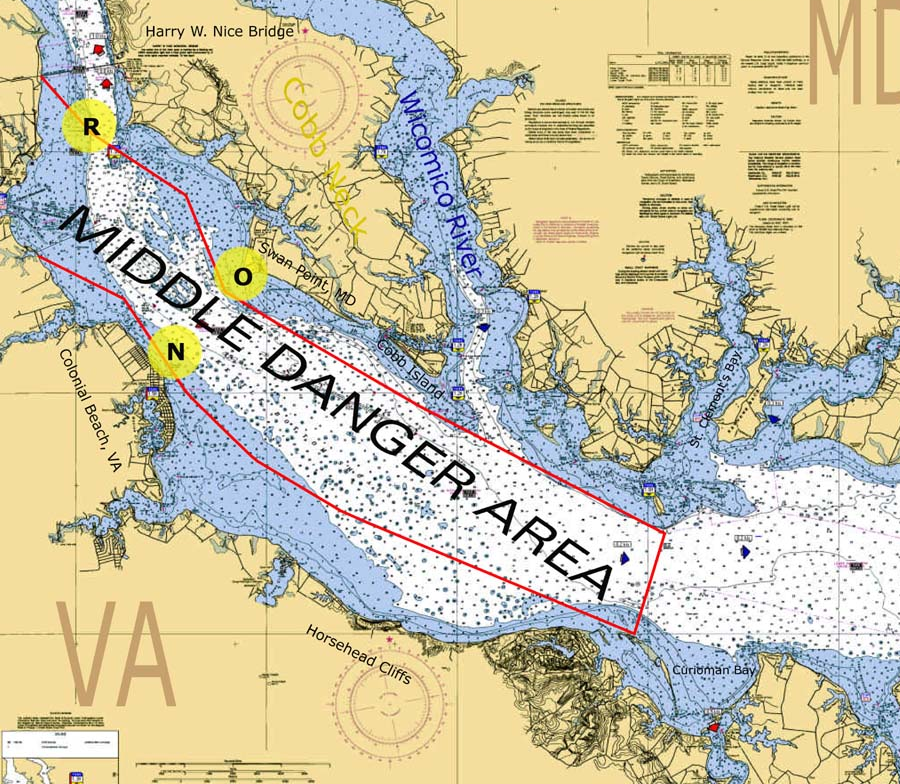
during most weapons tests, the Potomac River Test Range may be closed to boaters from the Route 301 bridge down to Currioman Bay
Source: NSWC Dahlgren Division, Safe Boating in the Potomac River Middle Danger Area
Occasionally, fishermen will get a shell caught in their bottom-dragging nets. US Navy officials suggest immediately dropping them back into the river, rather than betting the fisherman's life that the shell is a "live" round from testing dating back to 1918. The greatest objections o the tests come from nearby residents who object to the noise. Since the guns are placed on the Virginia shoreline, Maryland residents experience the most noise.
The US Navy will not move its range, though some tests are conducted in the Arizona desert where there are no residents to object to the noise. Dahlgren is easily accessible, with greater security compared to a test range in the ocean. It is long enough to conduct over-water and over-the-horizon tests, in four distinct seasons. In response to complaints about the noise, a US Navy official stated:9
In 2022, the US Navy proposed expanding the middle danger zone of the Potomac River range, downstream of the Governor Harry W. Nice Memorial/Senator Thomas "Mac" Middleton Bridge:10
Potomac River boaters had adapted to closures when the Navy fired about 4,700 projectiles, triggered 200 explosions in the river, and released substances over the water 70 times to simulate chemical/biological attacks each year. However, the boaters objected to widening the range and forcing them to travel in dangerous shallow water along the Maryland shore.11
The Potomac Riverkeeper and the Natural Resources Defense Council objected to the debris from weapons testing since 1918, and sued the US Navy in 2023. They cited the failure of the Federal agency to obtain a permit for discharge of waste as required by the Clean Water Act. The suit noted that the US Navy had deposited 33 million tons of ordnance and munitions into the river, involving 50 chemicals and organic compounds. To prepare for non-traditional attacks, the US Navy was also releasing chemical and biological materials into the Potomac River.12
To settle the lawsuit, the Navy agreed in 2024 to request a National Pollutant Discharge Elimination System (NPDES) permit from Maryland. The plaintiffs in the lawsuit anticipated that the process for granting a permit could end up producing the first scientific evidence of the impact of weapons testing on water quality and sediments within the Potomac River Test Range. The US Navy, which was firing 4,700 projectiles per year into the Potomac River, had estimated in 2009 that in the "dense zone" downstream of Naval Support Facility Dahlgren that almost 70,000 rounds per nautical square mile had accumulated on the river bottom.13
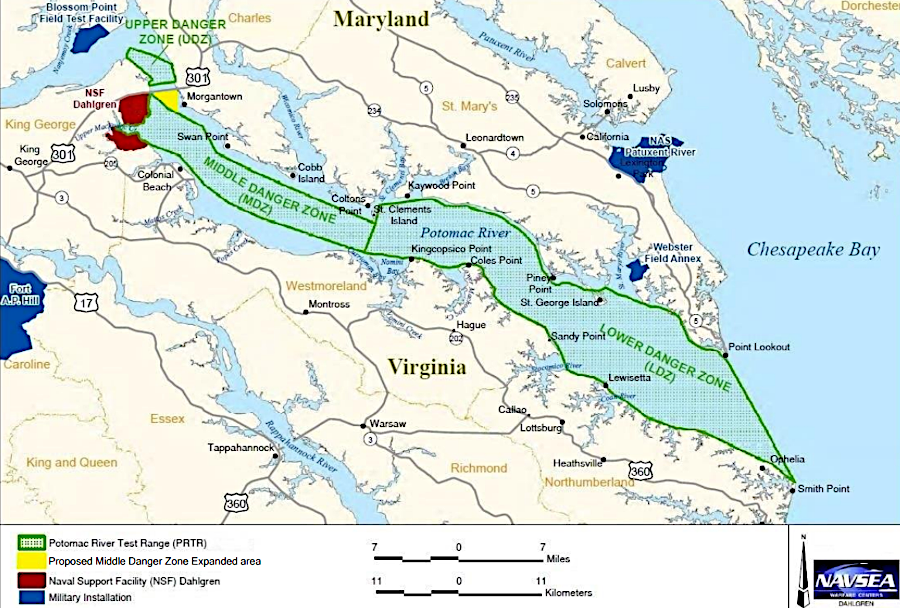
in 2022, the US Navy proposed widening the middle danger zone
Source: U.S. Army Corps of Engineers, Public Notice In Reply to Application Number NAB-2018-00042-M43
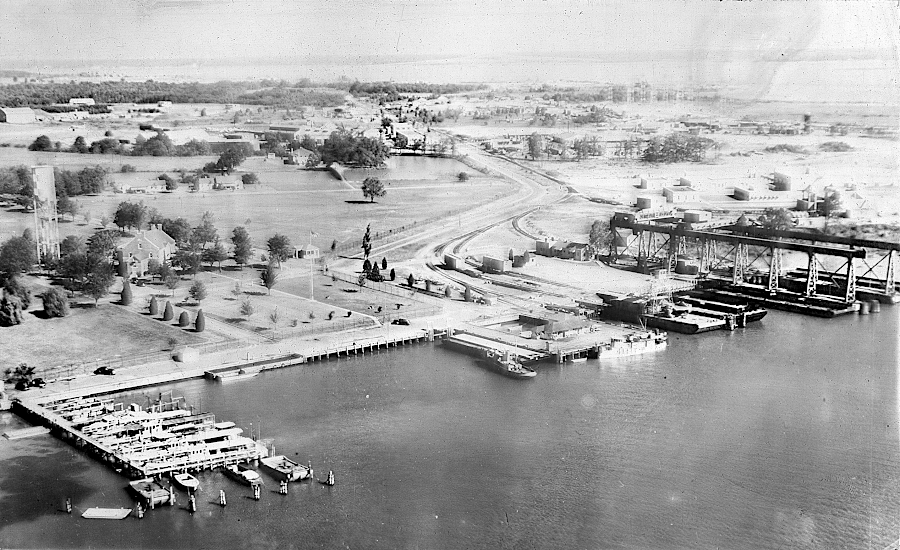
early development of Dahlgren, on the Potomac River
Source: Naval Sea Systems Command, Yardcraft facility at NPG, Dahlgren
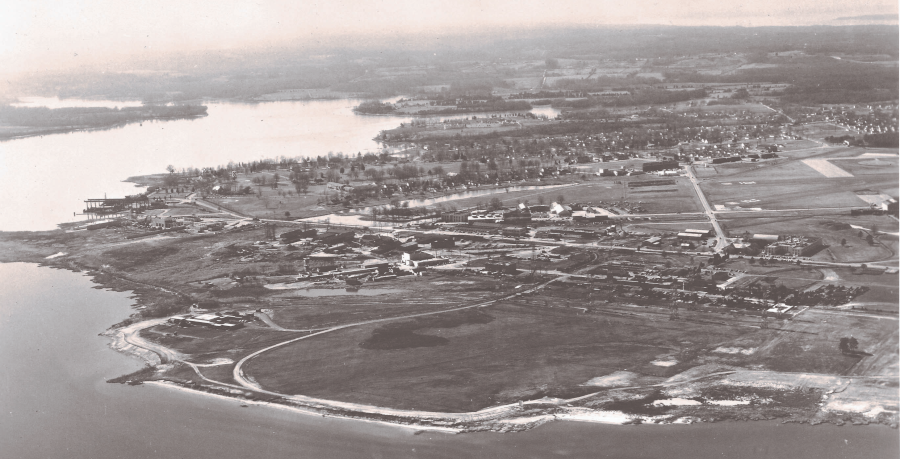
Dahlgren was located on the Potomac River so more-powerful US Navy guns and gunpowder could test longer-distance firing
Source: Naval Sea Systems Command, Naval Surface Warfare Center Dahlgren Division, Virginia - Main Battery Shoreline
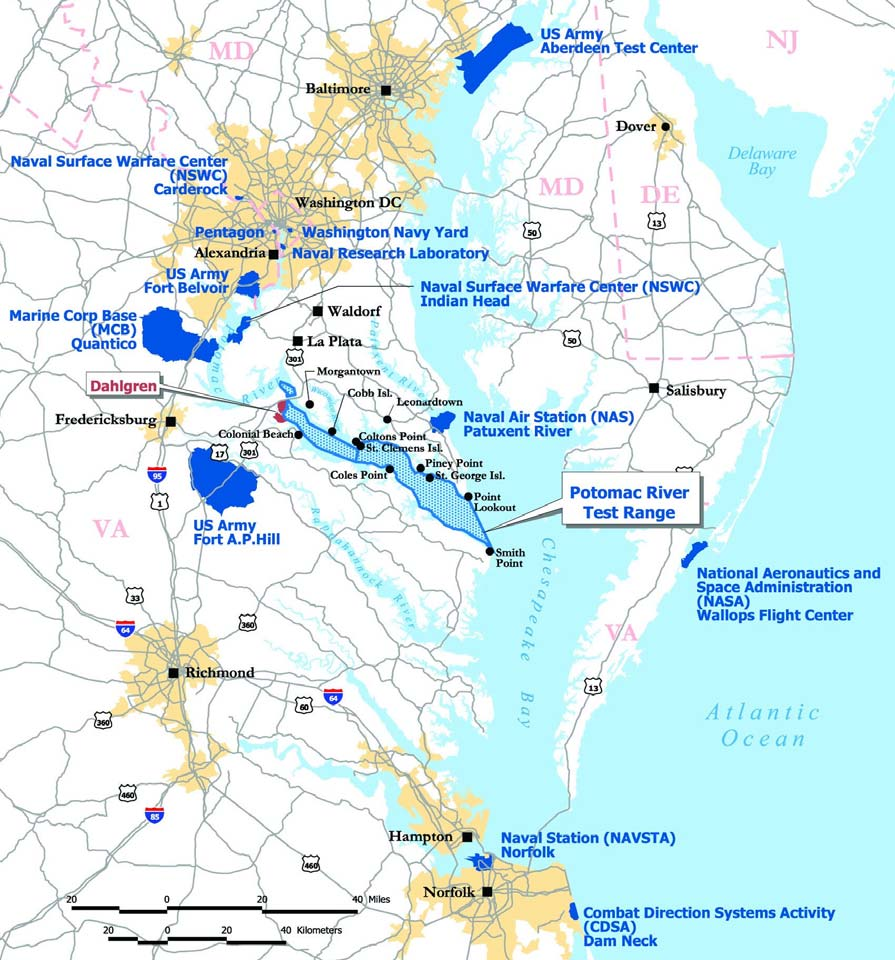
Dahlgren is close to other military bases, facilitating research sharing and implementation
Source: NSWC Dahlgren Division, Dahlgren: A Unique National Asset